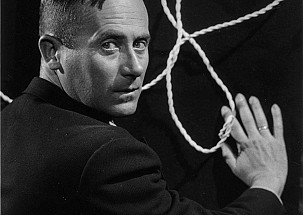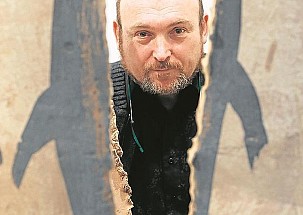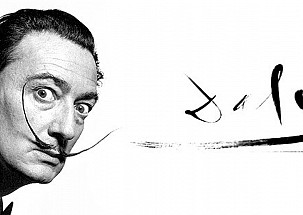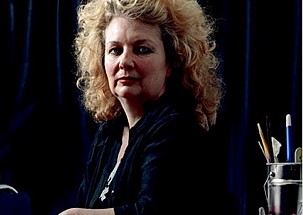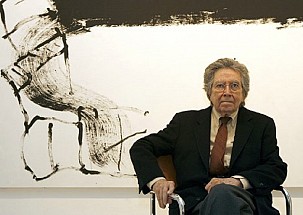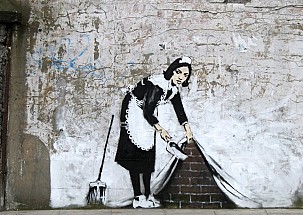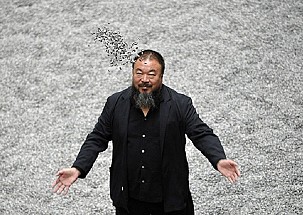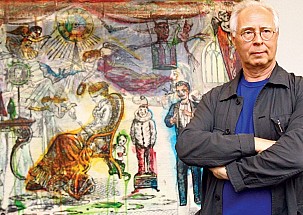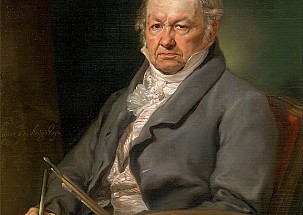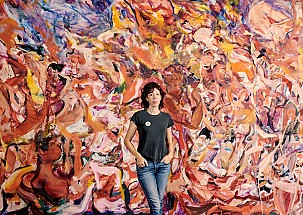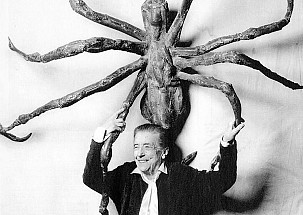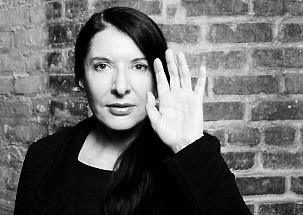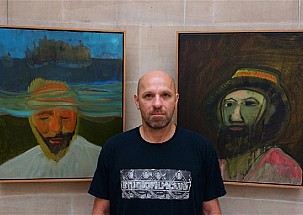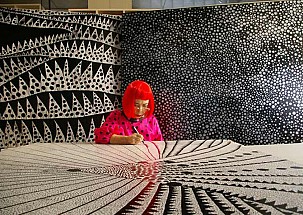As well as being one of today's most highly regarded artists (something that, incidentally, would have greatly annoyed him), Sigmar Polke is the personification of the versatile, nonconformist artist creator. His work runs the gamut of all the styles present in contemporary art, from Realism to Pop Art and from Arte Povera to pieces in whose creation a deliberate happenchance intervenes. However, what makes Polke one of the most interesting artists of the last four decades is that he never limited himself to just one single material or product (oil, acrylic, collage ....) on whichever mount or frame he chose to display them. In his workshop, he was given not only to mixing it up with all kinds of media but also to combining many of the components of 20th century culture.
As well as being one of today's most highly regarded artists (something that, incidentally, would have greatly annoyed him), Sigmar Polke is the personification of the versatile, nonconformist artist creator. His work runs the gamut of all the styles present in contemporary art, from Realism to Pop Art and from Arte Povera to pieces in whose creation a deliberate happenchance intervenes.
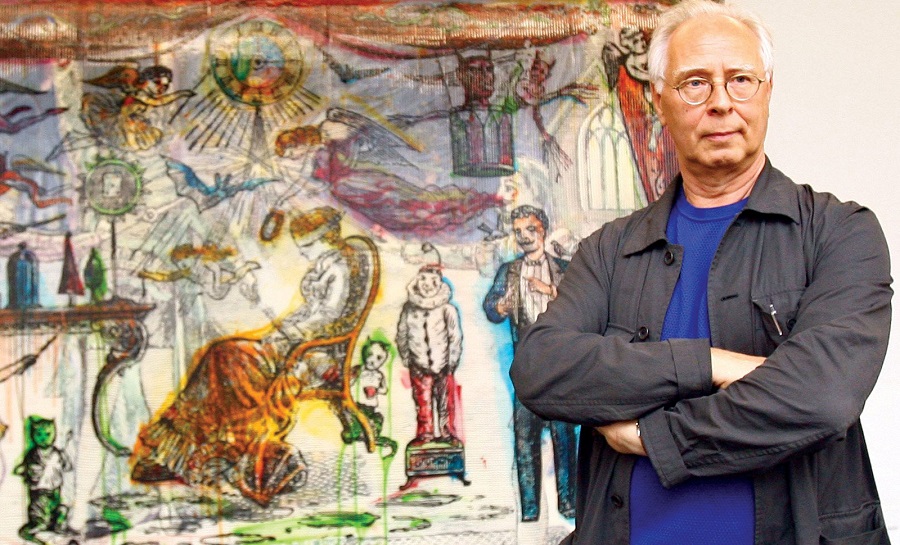
Sigmar Polke. Fredrik Von Erichsen—dpa/Landov - Encyclopædia Britannica Online.
However, what makes Polke one of the most interesting artists of the last four decades is that he never limited himself to just one single material or product (oil, acrylic, collage ....) on whichever mount or frame he chose to display them. In his workshop, he was given not only to mixing it up with all kinds of media but also to combining many of the components of 20th century culture. As a result, his work is full of nuances, and oftentimes poetry as an added ingredient, along with his very firm commitment to social commentary verging on whistleblowing.
From stained glass window apprenticeship to the Düsseldorf Arts Academy

Stained glass window by Sigmar Polke. Grossmünster Church. Photo: Roland zh
Polke was born in Silesia, now part of Poland, in 1941. His family were forced to flee to East Germany after his homeland's defeat in World War II and again in 1953, this time into neighbouring West Germany. With his family now settled in Düsseldorf, Polke began his artistic career learning the techniques of staining glass windows but soon exchanged this for Fine Arts studies at the Düsseldorf Arts Academy. Sometimes it's of the essence to find yourself in just the right place at just the right time which is precisely what happened in Polke's case as he was able to forge his talent under the tutorship, and influence, of professors such as Joseph Beuys, Karl Otto Götz and Gerhard Hoehme.
By 1963, Polke had already allied himself with several classmates and friends, amongst them none other than Gerhard Richter, to launch his first ever collective exhibition in one of the city's empty slaughterhouses. It was the starting point for both their careers and they would soon conceptualize something that would from then on be definitively linked to their art: Capital Realism.
Capital Realism, alquemy and provocation
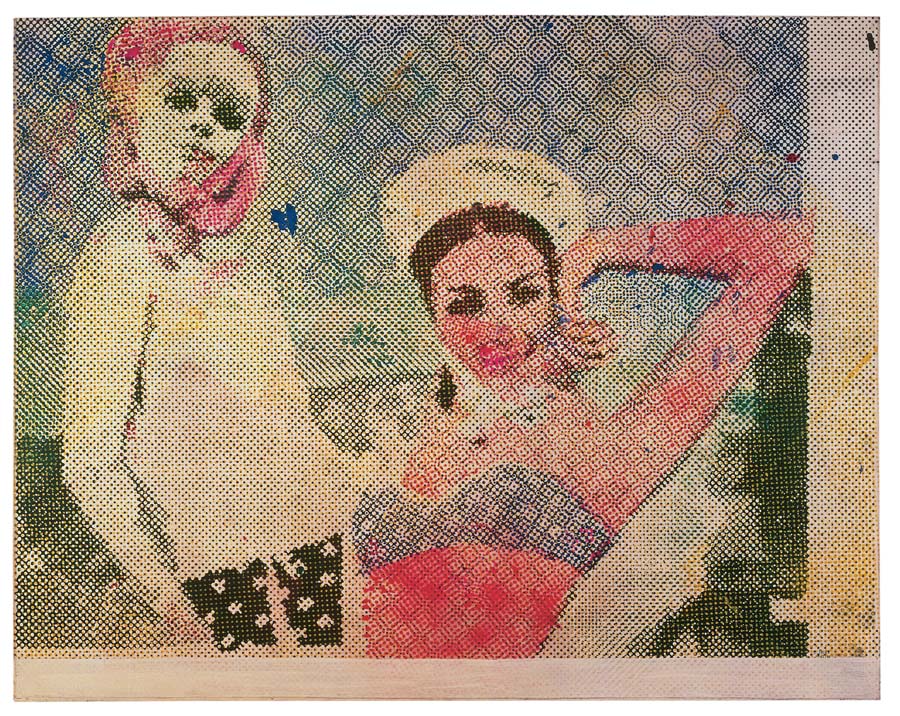
Freundinnen (Friends) 1964-65 © The Estate of Sigmar Polke / DACS, London / VG Bild-Kunst, Bonn. www.alexkittle.com
Capitalist Realism was inspired by Socialist Realism, the "official" art movement of Lenin's USSR and Mao's China. During these years, Polke intelligently mixed parameters inherited from New American art (heavily influenced by Warhol and Lichtenstein) with a stale realism riddled with stereotypes and symbols, like the swastika that was then banned in Germany. The result was a series of works denouncing not only Germany's absorption into a consumerist and capitalist maelstrom but also the stagnation, totalitarianism and omnipresence of the governments ruling the Communist bloc. This period is marked by iconic works such as "Freundinnen" (Friends) from 1965.
Polke was also known as the alquemist. In his studio, he mixed materials, media and products to give new meaning to reality and to art. These works, with formats ranging in scale from the smallest to the most monumental, differ according to who is looking at them, from which angle or distance and even the mood they happen to be in at the time. But Polke's alchemist zeal was not limited to just the purely technical field. As well as blending seemingly impossible products with pigments, from the 60's on he began to merge political and critical elements into his creative output, these layered with the German sarcastic tradition inherited from artists like George Grosz.
Buyer, I dare you
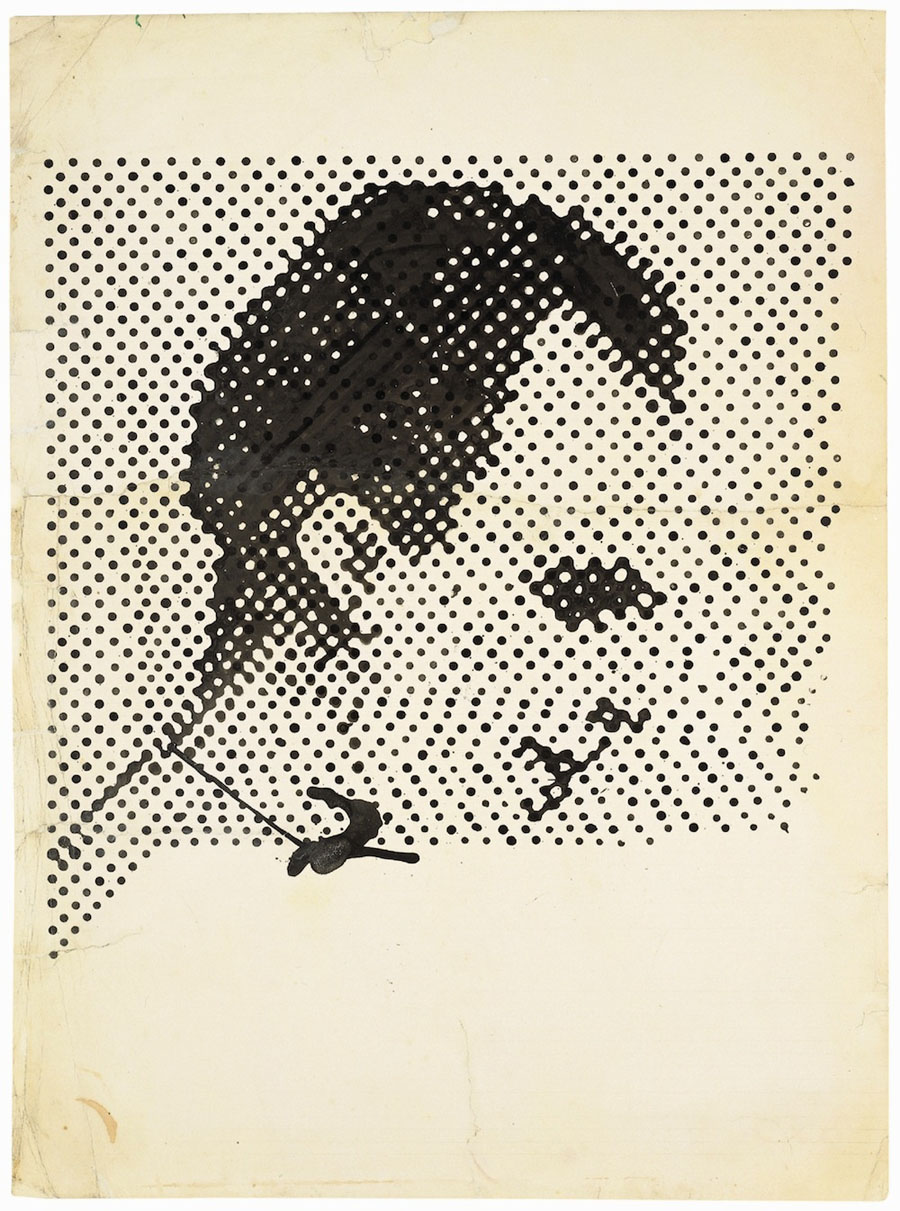
Sigmar Polke Raster Drawing (Portrait of Lee Harvey Oswald) 1963 © The Estate of Sigmar Polke / DACS, London / VG Bild-Kunst, Bonn. Tate UK
This type of experimentation gave rise to pieces full of political intent. During this time, Polke produced such provocative works as his famous portrait of Lee Harvey Oswald, painted in 1963. After seeing Warhol's well-known prints of the multiplied faces of Marilyn Monroe and Jackie Kennedy, Polke decided to do the same with one of the then most hated people in America: the alleged murderer of President Kennedy. His attitude was akin to a challenge to society, a way of saying to the world: "Here you are then. Buy it if you dare".
The LSD years

Sigmar Polke. Alice im Wunderland, 1972. Private Collection. Photo: Wolfgang Morell
© The Estate of Sigmar Polke by SIAE 2016. Eigth Art Projects.
The 70's were for Polke, as for so many other artists, a decade of experimentation. He went to live on a farm commune where he dabbled in drugs like LSD and magic mushrooms, in addition to contributing to the creation of collective artworks. They are fruitful years in terms of his creativity. Polke produces some quite powerful works based on mixing and overlapping new materials. And at this time, they also match the artist's photographs that he was manipulating using chemical agents in a seeming attempt to portray the human mind as altered by drugs.
In 1972, Polke takes part in the iconic documenta 5 in Kassel, Germany and from that moment on, his work achieved a worldwide popularity that continues to this day. The 70's also see him travelling extensively to the likes of Afghanistan and the Lebanon where his camera captured moments that he would later transform into works of art.
{youtube}Coia8F64KjI|900|506{/youtube}
The journalist Sarfraz Manzoor conducts an exhaustive review of the retrospective exhibition Alibis: Sigmar Polke (1963-2010) at the Tate Modern, London
Rupture and rebirth: Art as a reflection of a society in turmoil

Sigmar Polke. This is how you sit correctly (after Goya), 1982. Private collection, Baden Baden. Image viewable at www.artchive.com.
Already by now a world-renowned artist, at the start of the 80's Polke is rethinking his art and decides to break with all that went before in order to start again from scratch. The experimentation in his art becomes more troubling, explosive and radical. Over this period, he uses disturbing and even dangerous products to carry out his works: meteorite dust, arsenic-based toxic paint, uranium, ..... Polke draws on artists of the past who portrayed the horrors of war and human behaviour. Among them, Goya's work exerts a particular attraction and the Spanish artist's imagery appears in works like "This is how you sit correctly (after Goya)" from 1982.
Meanwhile, against the backdrop of the Cold War and the tense relations between world superpowers, the unstable political scene was giving much cause for alarm. This state of affairs can be seen reflected in Polke's work depicting a changing, nightmarish world during these years.
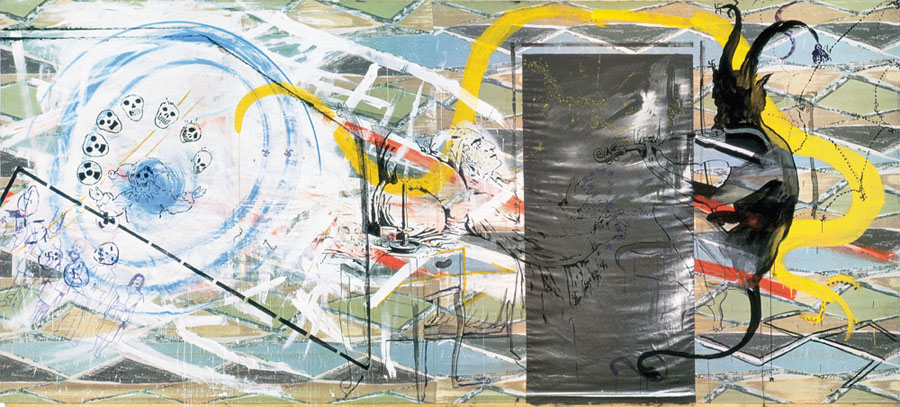
Paganini, 1982. Saatchi Gallery, London
In his later decades, Polke's work continued to evolve along these same lines. Without ever abandoning his references to Germany's past, evident in his portraits of young Nazis or the swastikas hidden in works such as "Paganini" from 1982, his continuous experiments with products, materials, transparencies, projections and graphics generated dozens of masterpieces, works that now constitute one of the most compact, coherent, shocking and provocative artistic trajectories of 20th century art history.
Notable exhibitions
Following the 1972 documenta 5 exposure that catapulted him to fame, Polke began a frequent chain of joint and individual exhibitions. Initially, his work was exhibited in German galleries (and later museums) which then moved on to cities such as Paris, New York, Washington and London. Polke died in 2010 but the world's greatest museums still continue to mount exhibitions to showcase the magnitude and diversity of his oeuvre.
- New Works - Sigmar Polke. Museum of Modern Art of the Ville de París, 1988. One of the first exhibitions outside Germany which marked the beginning of a worldwide dissemination of his work.
- The Three Lies of Painting - Sigmar Polke. Art and Exhibition Hall, Bonn, 1997. This exhibition subsequently moved to the Berlin National Gallery for Contemporary Art at Hamburger Bahnhof (1997-1998). It was based on a work of the same name from 1994.
- Retrospective. San Francisco Museum of Modern Art (SFMoMA), 1990. This was Polke's first ever retrospective in the Unites States. The exhibition subsequently moved to the Hirshhorn Museum and Sculpture Garden, Smithsonian Institution (Washington), the Museum of Contemporary Art (Chicago) and the Brooklyn Museum (New York).
- Sigmar Polke - Photoworks. When Pictures Vanish. The Museum of Contemporary Art, Los Angeles (1995). This exhibition was a compilation of the artist's photographs taken between 1960 and 1995.
- Retrospective - Sigmar Polke. Museum Frieder Burda - Baden Baden (Germany), 2007.
{youtube}_m4eHWc28io&t=65s|900|506{/youtube}
- Alibis - Sigmar Polke: 1963 – 2010. MoMA (New York). Later, Tate Modern (London), 2014-15.
{youtube}F_jEzpQJygw&t=261s|900|550{/youtube}
- Sigmar Polke - Palazzo Grassi, Venice, 2016.
{youtube}lb9k5EBccsE|900|506{/youtube}
- Sigmar Polke - Music from an Unknown Source. Museum of Modern Art, Mexico, 2017.
{youtube}LbA4MlDhdZg|900|506{/youtube}
(Translated from the Spanish by Shauna Devlin)
- Sigmar Polke: Biography, Works and Exhibitions - - Alejandra de Argos -





